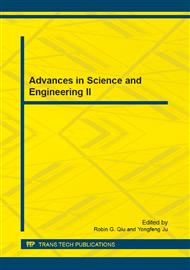p.331
p.336
p.341
p.347
p.353
p.359
p.365
p.369
p.375
Characteristics of Yichun Late Triassic - Early Jurassic Monzogranite
Abstract:
As building material, Granite has been extensively used. It is important to clear the geochemical characteristics of granites. The paper introduce the Late Triassic-Early Jurassic monzogranite, it mainly located in the south of Yichun area, which were intruded by medium grain monzogranite and syenogranite in Late Triassic-Early Jurassic. According to previous information, this granite distributed in Tangwanghe is widely in the south of study region. Rock type is coarse-medium grain porphyritic biotite monzogranite amphibole-bearing, the edge of the granite (Yishan Forest western) with a flow structure (once believed as gneissic structure), which was classified as Late Carboniferous coarse grained porphyritic gneissic monzogranite in 1:25 million regional geological survey. According to the SHRIMP dating from monzogranite gain the age is 201.5±2.9Ma, showing that the granite was formed in Late Triassic-Early Jurassic.
Info:
Periodical:
Pages:
353-358
Citation:
Online since:
October 2011
Authors:
Keywords:
Price:
Сopyright:
© 2012 Trans Tech Publications Ltd. All Rights Reserved
Share:
Citation:


